Gyeongsangbukdo Travel Attractions
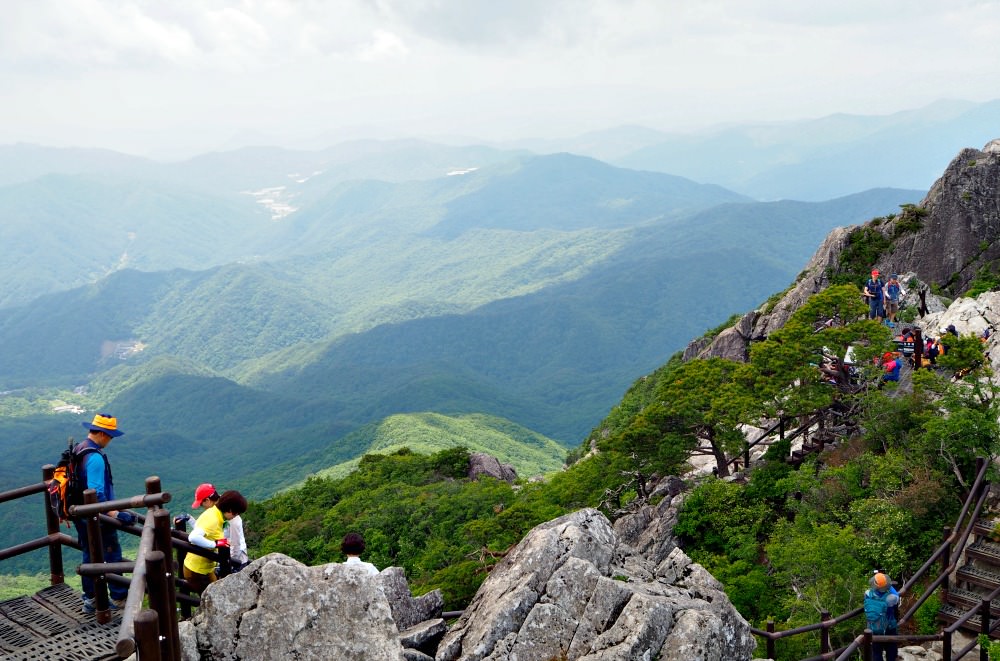 Gayasan National Park's Chilbulbong Peak ("Seven Buddhas Peak")
Gayasan National Park's Chilbulbong Peak ("Seven Buddhas Peak")Gyeongsangbukdo Travel Attractions
Gyeongsangbukdo Province (경상북도) is considered Korea's cultural warehouse. It is a province resplendent in both natural beauty and heritage websites, including serene temples, ancient pagodas, rock-carved Buddhas, and sublime burial places.
Gyeongju is frequently called 'the museum without walls' for its historical treasures, a lot of which are outdoors.
The rounded tumuli (burial mounds) hillocks in the center of town are lovely and tranquil pyramids-- stately suggestions of the dead they still honor.
The area's primary city, Daegu, has a historic center peppered with heritage churches and an exceptional medicinal-herb market, with close-by streets soaked in neon, superb dining establishments, and craft beer bars.
Elsewhere, Haeinsa (temple) is a must-see temple-library amidst the beautiful mountain scenery of Gayansan National Park. One of the best features in Haeinsa is the Tripitaka Koreana, 1000-year-old wooden tablets inscribed with spiritual Buddhist texts and ingeniously preserved.
The ancient town of Andong offers numerous expedition alternatives, while off the coast sits the rugged island of Ulleungdo, with endless opportunities to delight in amazing coastal landscapes.
Now, let me have the honor to introduce some of the best destinations located in Gyeongsangbukdo Province. Please, if available, click any link to a page for further descriptions of each article. Here we gooo...
Gyeongsangbukdo Travel Attractions
Hahoe Folk Town
Hahoe Folk Village wonderful conventional riverside village-- a Unesco World Heritage website-- is a place to communicate the traditional material of old Korea and, in the hectic months, with big crowds of visitors.
Tumuli-gongwon, Gyeongju City
The big, walled park has 23 tombs of Silla emperors and members of the family. From the outdoors, they look like substantial grassy hillocks that echo the mountains outside town.
Noseo-dong Burial Places, Gyeongju City
Near the primary shopping location is the Noseo-dong district, where you'll discover Silla tombs. Seobongchong and Geumgwanchong are adjacent tombs constructed in between the 4th and 5th centuries. They were excavated between 1921 and 1942.
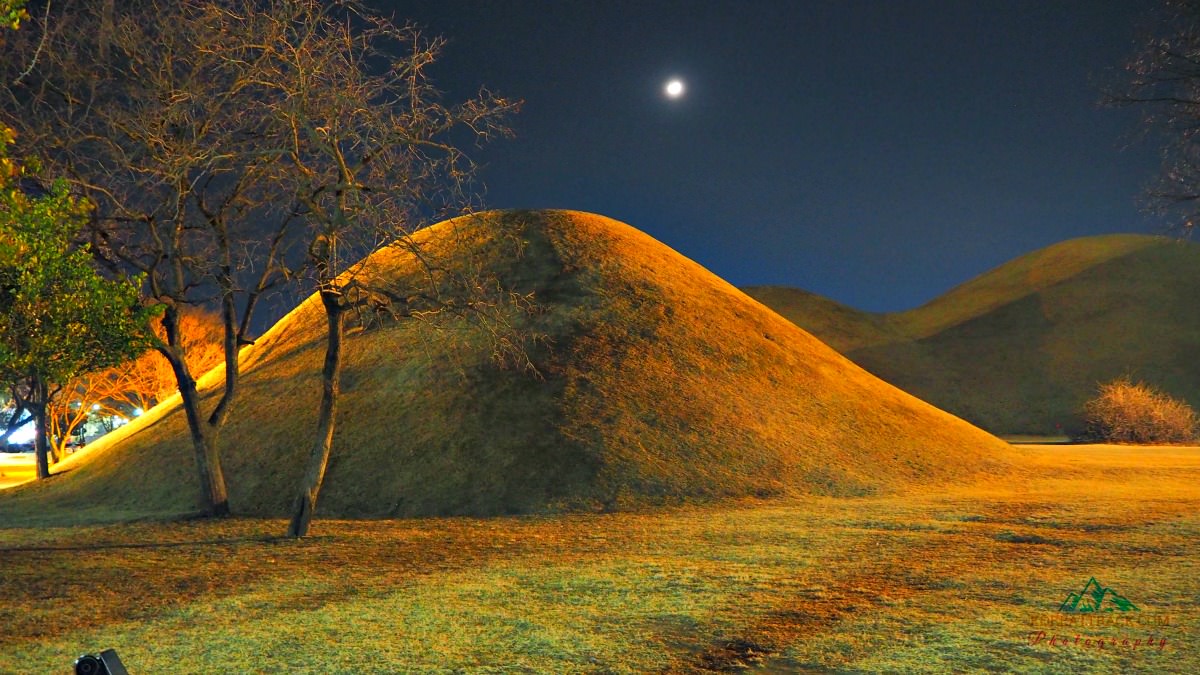 Noseo-dong royal tombs in Gyeonjgu City, Gyeongsangnamdo Province.
Noseo-dong royal tombs in Gyeonjgu City, Gyeongsangnamdo Province.Our Lady of Lourdes Cathedral
An icon and motif of Daegu, this lovely cruciform church is instead a sight, with its twin spires. Initially built in wood, the very first incarnation went up in flames in 1899.
Daegu National Museum
This exceptional museum has English identifying throughout the majority of its collection-- and what a selection. Armour, jewelry, Buddhist antiques from various ages, Confucian manuscripts, clothing, and fabrics.
Bonghwangdae, Gyeongju City
Growing huge trees of enormous girth, this is the most significant existing Silla tomb-- 22m high, with a 250m circumference. It's rather a picture at any time, but especially at sunset, if you get the ideal light and the sun go down.
Bulguksa Temple
On a series of stone terraces about 16km southeast of Gyeongju, set amongst iris gardens and knotted pines, this historical temple is the crowning glory of Silla architecture. It is on the Unesco World Cultural Heritage. My article here.
Haeinsa Temple
Haeinsa Temple area houses the Tripitaka Koreana--the 81,258 woodblock bibles, making it among the most extensive Buddhist libraries of its kind, this Unesco World Heritage-- noted temple ought to be on every visitor's not-to-be-missed list.
Seven-Storey Brick Pagoda, Andong
Directly east of town along the railway line, you will concern this charm-- the oldest and biggest brick pagoda in Korea. At practically 17m in height, the pagoda stands at the previous website of the Beopheung-Sa (법흥사).
Bokdu-am Hermitage
Near to the summit of the thickly forested Obong-san (640m), Bokdu-am features an enormous rock face out of which 19 specific niches have been carved. The three main slots hold a figure of the historical Buddha.
Juwangsan National Park
Beautifully positioned among the Baekdu mountains, this 106-sq-km reservation is most noteworthy for its magnificent limestone peaks, verdant valleys, grand canyons, caverns, ancient temples, and waterfalls.
Bogyeong-sa Temple, Pohang
You'll require an entire day to check out the offerings in and around this temple about 30km north of Pohang. Bogyeong-sa is an entrance to a lovely valley boasting 12 waterfalls and canyons spanned by bridges, hermitages ...
Seokguram, Gyeongju City
In the mountains above Bulguk-sa is this world-famous Unesco-listed Buddhist grotto, a magical place when rain and mists envelop the chipmunks and mountaintops dance in the thick woods.
Jikji-sa Temple, Gimcheon
Jikji-sa is a postcard-pretty temple in a splendidly quiet mountain forest setting. The fragile paintings on the temple buildings have an appealing grace, as do the giant woods and several historical stone pagodas.
Gyeongju National Museum
Perhaps the very best history museum in Korea, the Gyeongju National Museum is where you can value the significance of this ancient city in one fell swoop. The primary archaeological hall has dazzling displays of pieces of jewelry.
Andong Folk Town
On a hillside east of town and the far side of Weolyeonggyo Bridge, Andong Folk Town is a repository for traditional houses moved to prevent them from being submerged by the building and construction of Andong Dam in 1976.
Anapji Pond
This is a preferred area for couples to take pre-wedding images, specifically from June to early August, when spectacular lotus blooms seem to fill the horizon of this small pond.
Oksan Seowon
Established in 1572 in honor of Yi Eon-jeok (1491-- 1553), Oksan Seowon was among the most influential seowon or Confucian academies. More prominent in 1772, it was one of few to escape damage in the 1860s.
Golgul-sa Temple, Gyeongju City
A temple where you can do more than simply look around. The Buddha took of solid rock by Indian monks in the 6th century is relatively intriguing, but the real draw here is sunmudo, a Korean martial art.
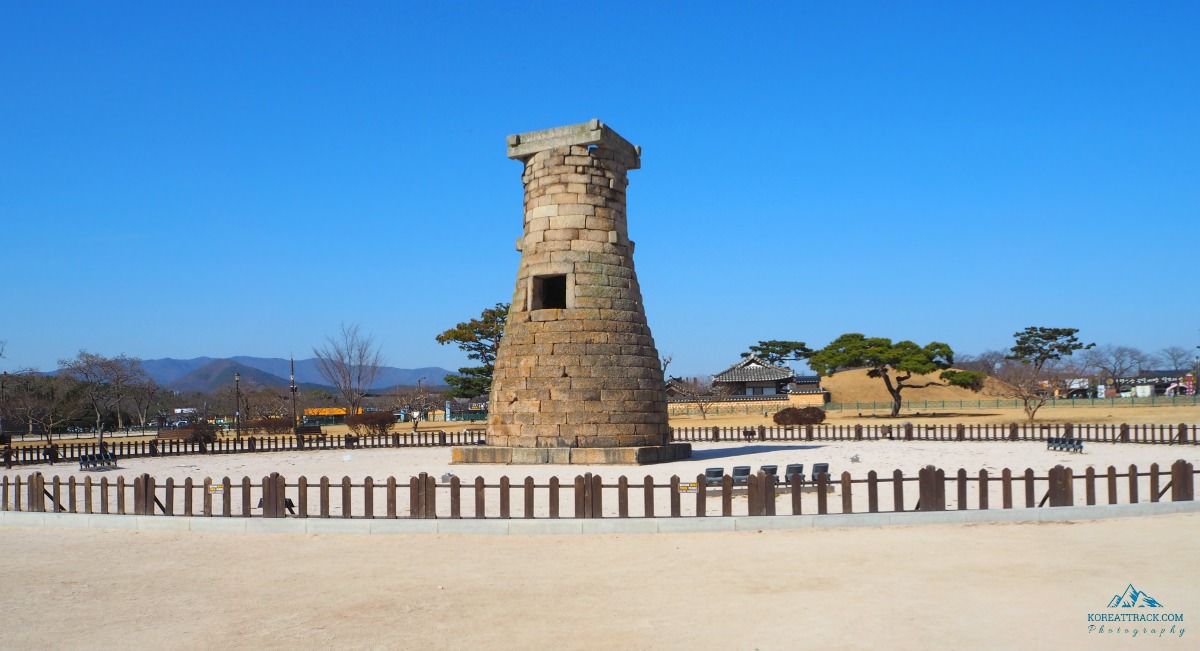 Ancient Cheomseongdae Astrology Observatory, Gyeongju City
Ancient Cheomseongdae Astrology Observatory, Gyeongju CityCheomseongdae Observatory
Southeast of Tumuli-gongwon is the appealing sprawl of Wolseong-gongwon, where you can find Cheomseongdae Astrological Observatory. It is the Far East's oldest observatory structure, constructed in between 632 and 646. Its design hides fantastic elegance: the 12 stones.
Hwangnyong-sa Website, Gyeongju City
The ruins of this merely large 6th-century temple are a desolate and sad spectacle: once the nation's most significant Buddhist temple, its standout feature was a big nine-story, 80m-tall pagoda (the world's tallest wooden pagoda).
Jebiwon Seokbul, Andong Shrine
The body and bathrobes of this Buddha are sculpted on a boulder over 12-meter high. On top of the body are the head and hair, carved out of two separate pieces of rock.
Byeongsan Seowon, Hahoe Folk Town
This Confucian seowon (서원; academy) from 1572 is set in leafy surrounds set up with a typical sense of Confucian balance, with the primary hall and flanking side-halls a conclusive nod to excellent pungsu-jiri (feng shui).
Dongnakdang Hall
A 10-minute walk beyond Oksan Seowon up the valley roadway will bring you to Dongnakdang, a beautiful collection of well-preserved buildings, built in 1515 and broadened in 1532 as the home of Yi Eon-jeok.
Gatbawi, Palgongsan Provincial Park
Gatbawi is a medicinal Buddha shrine and national treasure, some 850m above water level and stated to go back to AD 638. This Buddha is famed for the flat stone 'hat' hovering over its head, 15cm thick. Incense wafts ...
Bunhwang-sa Temple Pagoda, Gyeongju City
This big pagoda was integrated in the mid-7th century during Queen Seondeok's reign, making it the oldest datable pagoda in Korea. It's a rare example of one made from brick. The superbly sculpted Buddhist guardians ...
Mineral Spring Park, Ulleungdo Island
The highlight of this park, a 350m climb above Dodong-ri, is the cable car across a steep valley to Manghyang-bong (316m). The ride up affords stunning views of a bird and the sea' s-eye view of Dodong-ri.
Dosan Seowon, Andong
This old and sublime Confucian academy has a relaxing setting enveloped by mountains and set down over the river. A substantial willow tree fronts the peaceful, reflective halls; the museum within includes information of its features.
Banwol-seong
A couple of minutes' walk south through the trees from Cheomseongdae, Banwol-seong is the site of a once-fabled fortress. Now it's attractive parkland, where you can see some ruins and walls.
Daegu's Herbal Medication Market
This market, west of the central shopping district, has a history as massive as its scope. It dates from 1658, making it Korea's earliest medication market and still one of the most significant.
Underwater Tomb of King Munmu
This small rocky island offshore is the famous tomb of King Munmu (661-681), Silla king, and unifier of the three kingdoms, who demanded he is put to rest in the East Sea so he might end up being a dragon and safeguard the area.
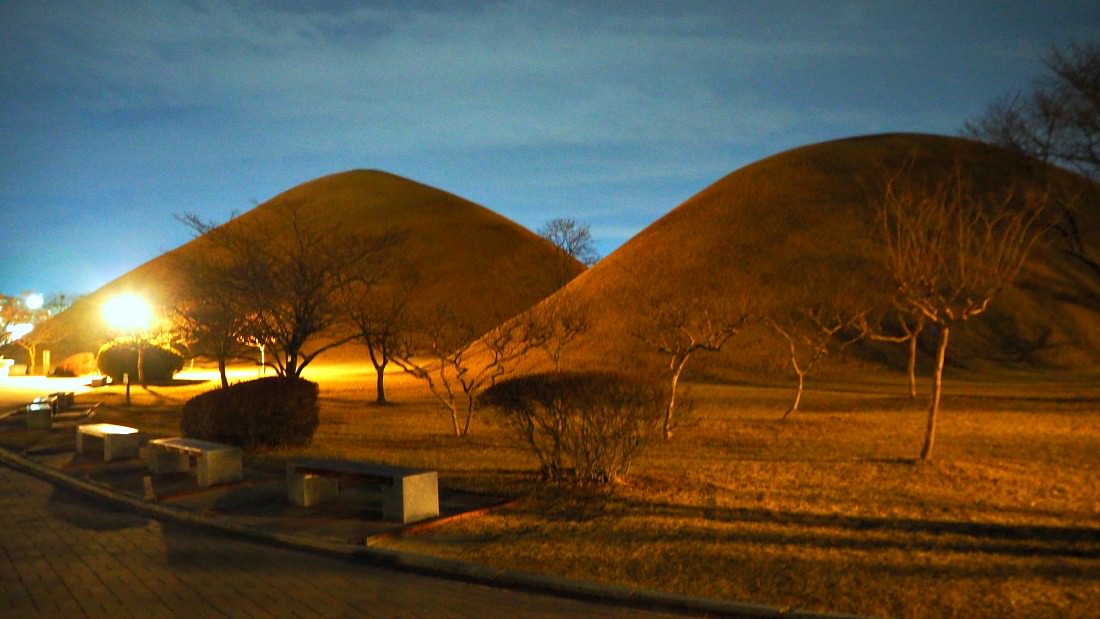 Burial mounds in Gyeongju City is everywhere that you think this place is an open museum
Burial mounds in Gyeongju City is everywhere that you think this place is an open museumBullo-dong Tumuli Gongwon
In the north end of the city, Bullo-dong Tumuli Gongwon is an enormous open space covering some 330,000 sq meters. The grassy hillocks that increase like bumps across the valley are tumuli (burial mounds).
Daegu Hyanggyo Confucian School
This tranquil Confucian School at the heart of Daegu is an oasis of reflective calm, which dates to 1398 (though it was burned down by the Japanese and rebuilt in the late 16th century).
Taeha-ri, Ulleungdo Island
There is an excellent view of the northern coastline from Hyangmok Lighthouse in the northwest corner of the island, about 20km from Dodong-ri. To get there, you take a monorail on a five-minute, 304m ride up a mountaintop.
Yangnam Jusangjeolli Rock Forms
These unusual and intriguing rock types in the sea on the coast east of Gyeongju are composed of a variety of columnar rock joints (jusangjeolli: actually 'column type joints'), which summon in a unique geological formation.
Bongnae Pokpo, Ulleungdo Island
A high 1.5 km walk from Jeodong-ri is Bongnae Pokpo. Source of the island's drinking water, the waterfall is rather magnificent during summertime.
Five-Storey Brick Pagoda
Hidden away in a small plot, next to a parking area near the train station, is this brick Buddhist pagoda dating to the combined Silla period. It's a most elegant pagoda and in an excellent state of conservation.
Haein-sa Museum
On the method to the temple, this outstanding museum showcases temple treasures like replicas of the scriptures, Buddhist art, and other artifacts, consisting of a collection of the routine vajra (dorje). See Haeinsa Temple.
Weolyeonggyo Bridge
The longest pedestrian-only bridge in South Korea, this 387m-long partially wooden bridge spanning the Nakdong River, is an attractive crossing indicate the Andong Folklore Museum on the far side of the water.
Goddess Samsin Tree
Rather a sight, this big 600-year-old Zelkova tree stands at the heart of the village, occupied by a goddess (or three goddesses in one, as the name samsin suggests '3 goddesses') who women pray to for children.
Cheongna Hill
Not far from Our Woman of Lourdes Cathedral is this very historical sloping area of Daegu, which includes various early-20th-century missionary homes and houses; it's a captivating diversion into the city's European-style village.
Hwangnyong-sa History and Culture Museum, Gyeongju
At the Hwangnyong-sa site, this excellent museum contains a design of the colossal temple pagoda as it as soon as looked, a huge illuminated Buddha head, other displays associating with a wise coffee shop and the previous temple.
Thirteen-Storey Stone Pagoda
Built upon a square base and tapering in phases to its top, this very appealing and unique pagoda dates to the 9th century and is located on the left side of the road in between Dongnakdang and Jangsan Seowon.
Sunset Point Structure, Ulleungdo (Island)
Sunset Point Pavilion is a steep 15-minute walk above Dodong-ri, commanding magnificent views of the ocean and the sunset. To arrive, follow the western creek out of town and cross the bridge after a school area.
Daegu Arboretum
These superb arboretums in the south of town offer shade from the sun and a vast range of plants and trees, in addition to numerous large greenhouses that contain more unique specimens.
Seobongchong Tomb, Gyeongju City
At Noseo-dong Tombs, the tomb of Seobongchong was erected between the Fifth and 4th centuries. Excavation of the mound yielded a gold crown of Silla origin that now lives at the Gyeongju National Museum.
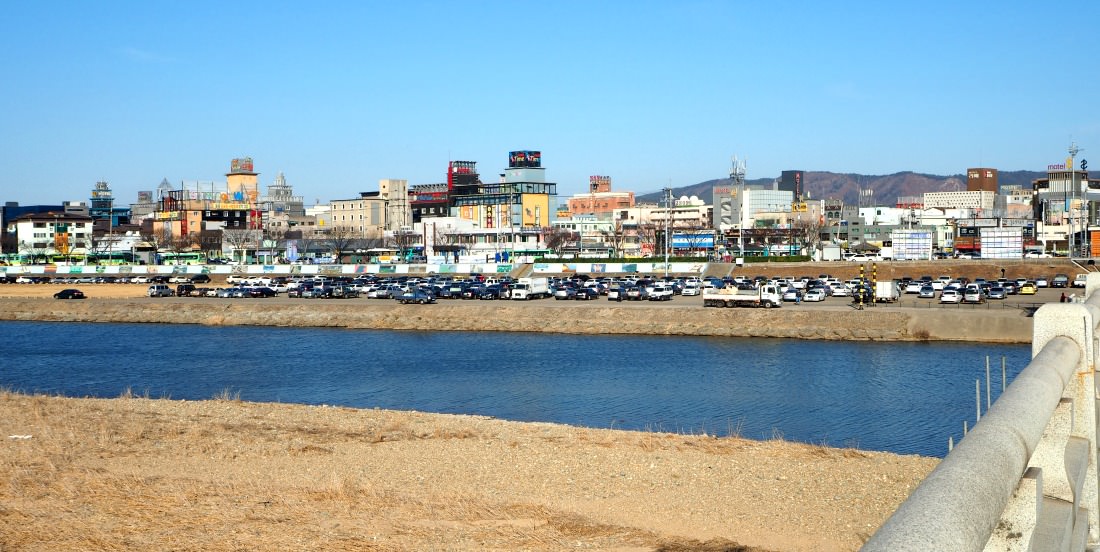 Gyeongju City
Gyeongju CitySinseon-sa Temple, Gyeongju City
This temple in Songseon-ri near the top of Danseok-san (827m) was used as a base by General Kim Yusin in the 7th century. The temple is the house of the Danseok-san grotto, which contains ancient Buddhist carvings.
Donghwa-sa Temple
Palgongsan Provincial Park's most popular location is the province's leading temple, with a history extending back to AD 493. For the temple, leave the bus at the Donghwa-sa stop; it's an 800m walk from there.
Cheongnyang-sa Temple
The largest temple in the park is Cheongnyang-sa. Integrated in 663, the temple is quite picturesque, sitting in a steep valley below the cliffs. The are several other hermitages in the park as well.
Buyongdae Cliff
This cliff on the far side of the river pays for incredible views over the town. Take the ferryboat (4000) from the small beach by the Mansongjeong Pine Forest to reach the cliff.
Daejeon-sa Temple
This small, noble temple, first built in 672 ADVERTISEMENT and rebuilt 1000 years later, welcomes visitors just inside the entryway to Juwangsan Reservation, making it seem like a magnificent gate.
Jikji Museum of Buddhist Arts
Jikji Museum houses a collection of 2000 Buddhist treasures and relics from temples in Gyeongsangbuk-do. Emphasizes consist of a bronze bell cast by a monk, and a big uncovered bronze gong.
Cheonmachong Tomb, Gyeongju
This is the only burial place at Tumuli-gongwon that is open to visitors. Cheomacheong is one of the main attractions in this burial park. It is exciting to enter into the mound and see the tomb of a king buried with his gold treasures, including the gold crown.
Geumgwanchong Burial place
At Noseo-dong Tombs, Geumgwanchong was constructed between the fourth and fifth centuries.
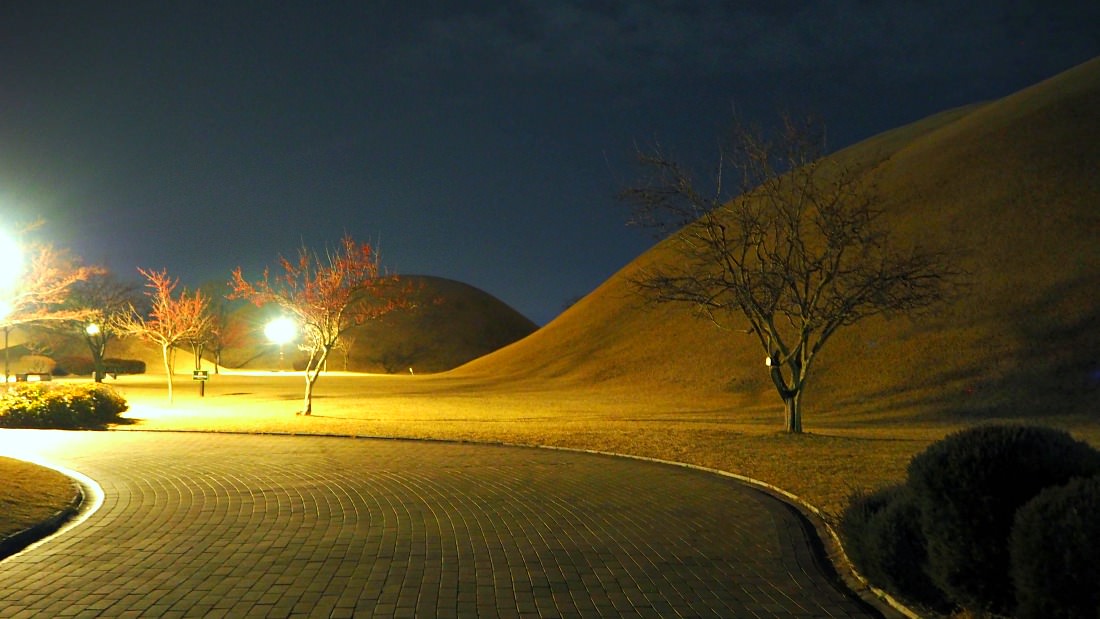 These mounds are part of the ancient royal burial park where Cheonmachong Tomb is located.
These mounds are part of the ancient royal burial park where Cheonmachong Tomb is located.Chilbul-am, Gyeongju City, Namsan Mountain
Chilbul-am is Namsan Mountain's most significant relic, with images carved in natural rocks and stone pillars. It is set next to the little Buddhist temple and hermitage.
Dodong-ri
Dodong-ri is the island's primary tourist hub, indicating the best selection of accommodations and dining choices. Behind the ferryboat terminal, a spiral staircase causes a strolling seaside path offering fantastic views.
Daegu Yangnyeongsi Museum of Oriental Medication
An interactive museum on the upper two levels has re-creations of traditional clinics and video quizzes but uses a decreasing number of English captions as you rise.
Soju Museum
The heady 45% soju (local vodka) of Andong might not be to your taste. However, its significance has been maintained with its designation as an intangible cultural home. Found on the grounds of the Andong Soju Brewery.
Lake Bomun Resort
Bomun is a tourist district around an artificial lake, 5km east of main Gyeongju. Tradition-seekers will find the tandem bikes, paddle boats, conference centers, and much less attractive.
Girim-sa Temple, Gyeongju City
Girim-sa is among the biggest complexes in the vicinity of the Silla capital, about 3.5 km down the road from Golgul-sa. Its size compares with that of Bulguk-sa. However, the complex lacks a 'wow' aspect.
Daegu Modern History Museum
Found within the incredible previous Joseon Siksan Bank building (check out the brickwork), which dates to 1918, this educational museum gives you the low-down on contemporary Daegu, focusing on the city's 20th-century features.
Gyeongsanggamyeong Park
As soon as known as Central Park, this is a stunning spot to flee from Daegu's modernity and fumes. It is a place of birdsong, where seniors and couples gather at night.
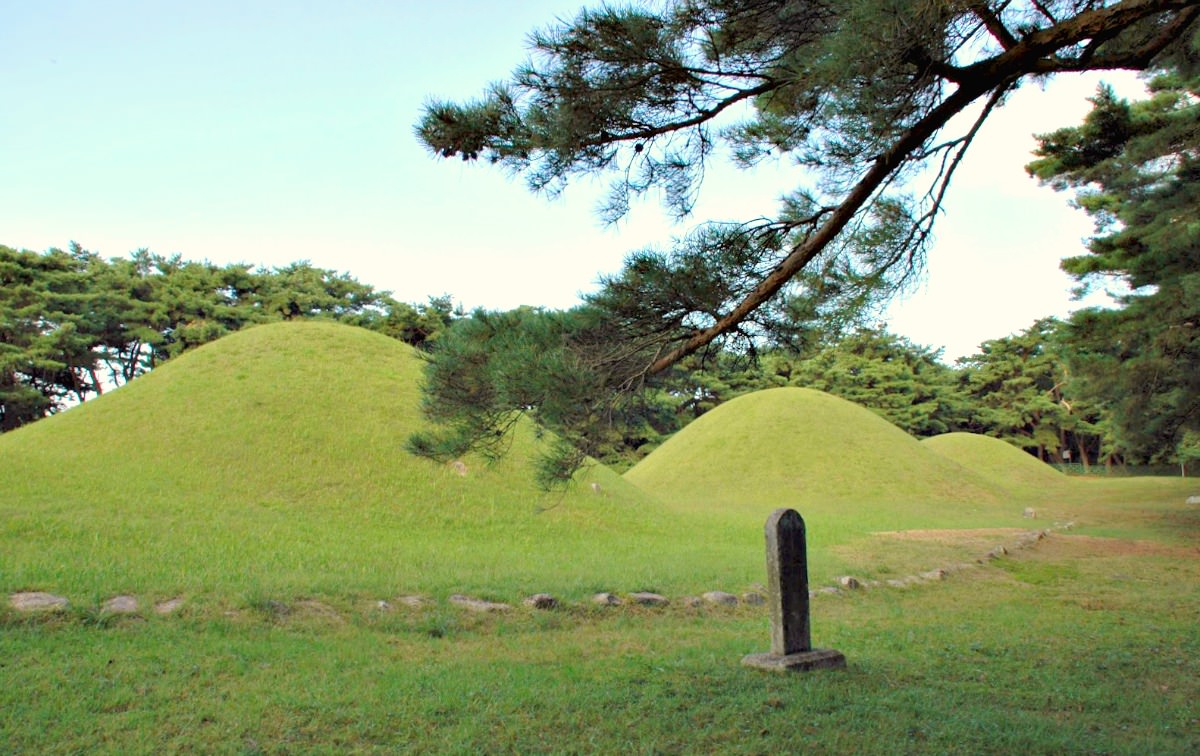 Samneung (3 kings) Tombs
Samneung (3 kings) TombsSamneung Tomb, Gyeongju
The factor to come to this pine grove is to begin a hike up Nam-san. On your way up, you might pass the tumuli of 3 Silla kings. Another tomb, located away from the others, is said to consist of King Gyeongae.
Monument to the Old City Wall
This monolith records the presence of the old city wall that when ringed the town. The wall was taken down in 1905. However, its history endures in roadway names such as Dongseong-no (East City Wall Road) and Bukseongno.
Gyeongju National Park, Toham-san District
Gyeongju Reservation is South Korea's sole historical reservation and is divided into several areas around the city of Gyeongju.
Wooyong Museum of Contemporary Art
This modern art museum has three exhibition areas with seasonal exhibits plus a long-term collection containing paintings, sculptures, and multimedia. It's a sister to Artsonje Center Seoul.
Sangsabawi, Gyeongju City
Sangsabawi resembles a pure rock however is penetrated with a morbid legend telling of an older male who, suffering from unrequited love for a town woman, hung himself and changed into the rock.
Gyeongju Reservation--Namsan District
Gyeongju Reservation is South Korea's sole historic reservation and is divided into several sections around the city of Gyeongju.
Ongnyong-am, Gyeongju City
In the upper corner of this hermitage are boulders covered with Korea's most fabulous collection of relief carvings. The 24 different representations of Buddha were carved into the rock.
Jangsan Seowon
Closed when visited last, this rebuilt Confucian academy initially dates to the late 18th century. Search for the indications to the academy suggested in hanja 章山書院.
Gyeongju Folk Handicraft Town
This town of 45 standard Korean tiled- and thatched-roof houses near Toham-san and Bulguk-sa is house to artisans working with metal, ceramic, wood, and other materials.
Gyeongju National Park-- Danseok-san District
Gyeongju National Park is South Korea's sole historic national park. It is divided into several areas in and around the city of Gyeongju. This section of the park is to the far southwest of Gyeongju city center.
Hahoe Mask Museum
This museum, near the primary entrance and bus drop-off point, houses an impressive collection of conventional Korean masks (탈), in addition to masks from across Asia and countries as diverse as Nigeria, Italy, and Mexico.
Gyeongju Reservation-- Hwarang District
Gyeongju Reservation is South Korea's sole historical national park and is divided into several areas in and around the city of Gyeongju. This section of the park is to the west of Gyeongju city center.
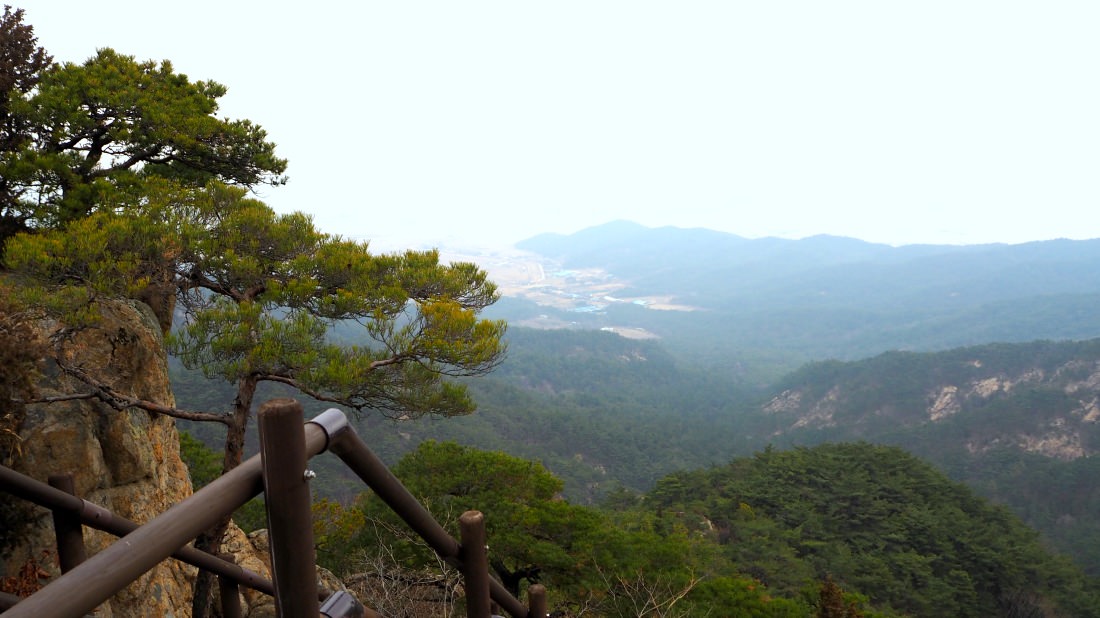 A panorama of Gyeongju from Namsan (mountain), Gyeongju National Park
A panorama of Gyeongju from Namsan (mountain), Gyeongju National ParkGyeongju National Park-- Seoak District
Gyeongju National Park is South Korea's sole historical reservation and is divided into several sections in and around the city of Gyeongju. This area of the park is to the west of Gyeongju city center.
Gyeongju National Park
Gyeongju Reservation is South Korea's sole historical reservation and is divided into several areas around the city of Gyeongju. This area of the park is to the east of Gyeongju city center.
Beopjang-sa Temple, Gyeongju City
This small one-hall Buddhist temple opposite the north gate to Tumuli-gongwon is worth a look-in, specifically for the vividly-painted guardians painted on the primary doors as you get in.
Mangdeok-sa Temple, Gyeongju City
This vast Silla-era temple complex is spread out throughout an open field, its origin filled with legend and rumor. Once swayed to alert of a coming rebellion, one tale tells that the pagoda.
Jeodong-ri, Ulleungdo
Jeodong-ri is a fishing town with picturesque sea walls, fishing webs, and seagulls. The boats with the lights strung around like large-scale holiday lights are for capturing squid.
Namyang-Dong, Ulleungdo (Island)
The seaside roadway from Dodong-ri to Taeha-ri leads through Namyang, a tiny seaside neighborhood with spectacular cliffs covered with Chinese juniper and odd rock developments.
Mansongjeong Pine Forest
This thin and long copse of pine trees together with the river functions as a windbreaker. It deals with Buyongdae Cliff and leads to a stretch of sand along with the riverbank.
Andong Folklore Museum
Near the Andong Folk Town, this museum offers transparent screens of Korea's folk customs from birth through to death.
Presbyterian Church
With its skilfully-made grey brick spire, this little church is a reminder of the pervasive presence of Christianity even in the smallest of neighborhoods.
Tomb of General Kim Yusin
The royal burial place of General Kim Yusin's tomb has 12 statues carved with the similarity of the indications of the zodiac signs watching over the resting place.
Daewon-sa, Ulleungdo (Island)
This small temple might be accessible; however, being within walking distance from Dodong-ri makes it a great resting area for a walk.
Yongdamjeong, Gyeongju City
A pavilion on Gumi-san, a mountain northwest of main Gyeongju, of the native Korean religious beliefs Cheondoism.
Tapgol, Gyeongju City
Called Pagoda Valley, however, the most significant draw of Tapgol is the hermitage Ongnyong-am and its Buddha carvings.
Juwanggul Cave, Juwangsan Reservation
This modest collapse can be checked out on a drop-in on a side-trip after going up the slopes of Juwang-san.
Badukbawi, Gyeongju City
When you're on top of this rock, you will get much better views of the valley that you don't need to be at the highest peak.
Yongjangsaji, Gyeongju City
At this temple, you can see a seated Buddha image sculpted in stone and a three-story stone pagoda.
Hurimaegi, Juwangsan National Park
A valley of trees that paints the perfect picture, with a wood bridge strung out across a creek.
Mujanggul Cavern, Juwangsan Reservation
When hid a stash of weapons, another rather modest cavern where legend states King Ju (Juwang).
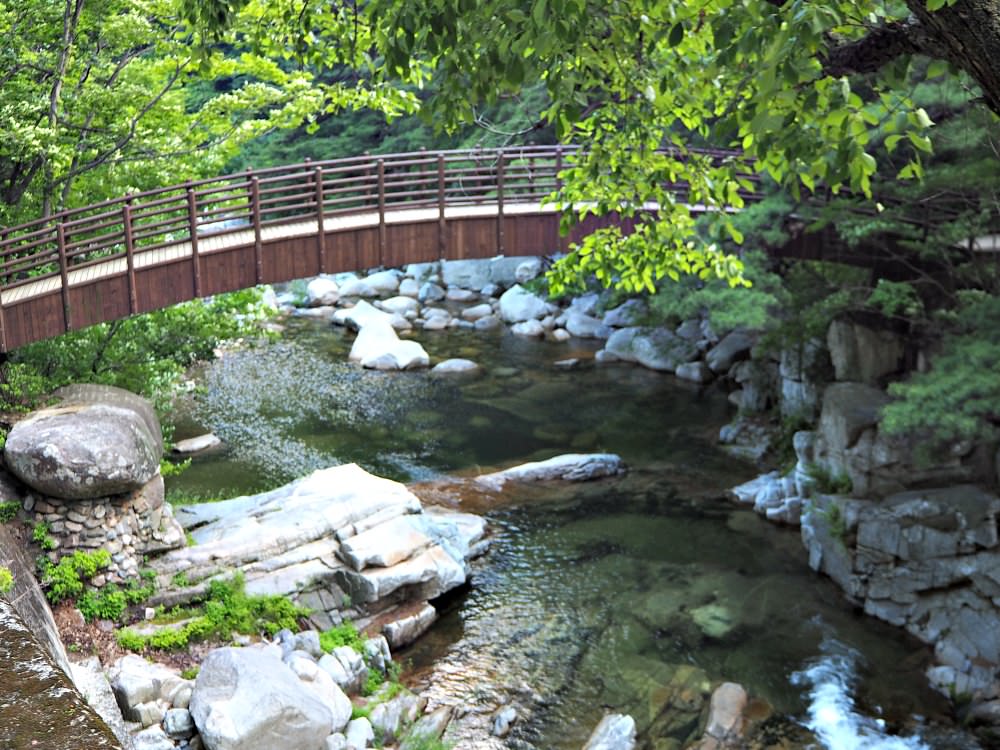 Hapcheon Stream at Gayasan National Park
Hapcheon Stream at Gayasan National ParkSangseon-am Hermitage, Gyeongju City
At this hermitage, you'll discover charming views throughout the valley and maybe a monk chanting.
Daeseongsa Temple, Daegu City
Daeseongsa is a temple in Apsan-gongwon, southern Daegu, with a big, white standing stone Buddha.
Cheongnyangsan Museum, Cheongnyangsan Provincial Park
A modest effort with artifacts connected to the location's farming history.
Geumnyeongchong Burial Place, Gyeongju City
Throughout the road from Noseo-dong tombs is this burial place, adjacent Bonghwadae.
Bori-sa Temple, Gyeongju City
This entirely rebuilt nunnery is set in the middle of old-growth trees.
Juwang-am, Juwangsan National Park
This enjoyable and little Buddhist hermitage is worth coming by.
Naewonmaeul, Juwangsan Reservation
A popular small-town where craftspeople perform woodworking.
Gwangam-sa Temple, Juwangsan Reservation
This is an appealing and little Buddhist temple.
Yeonhwagul Cavern, Juwangsan National Park
A cave that can be explored within the park.
Gwaeneung Tomb, Gyeongju City
Gwaeneung is the burial place of King Wonseong.
Indeed, there are more fascinating Gyeongsangbukdo travel attractions that are not mentioned above. Better yet, some sites, sights, and wonders are not popularly known but need to be explored.
That would be the task of this travel website. I intend to keep on updating this travel guide with destinations and attractions not so saturated yet.
Now, I hope you will continue scanning for and supporting this free travel guide about South Korea.
I hope you have fantastic and memorable journeys!
- Home
- Gyeongsangbukdo Travels
Get Exciting Activities
Book one of our exciting activities today to experience the thrill of a lifetime! Take advantage of this opportunity and secure your spot in advance.
Hotel Map Guide
Find your affordable, accessible, and comfortable hotel in Seoul at Agoda.Com. See the hotel map below...
Hotel Booking Guide
Find affordable and amazing hotels on Agoda.com using the search box below. Book now to enjoy great discounts and save!
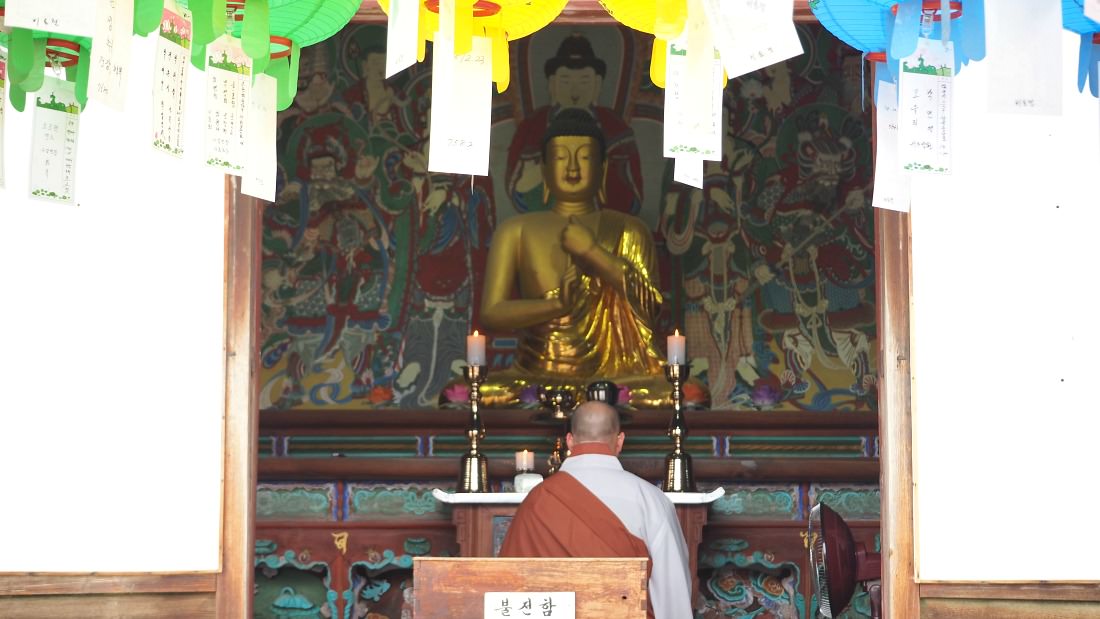
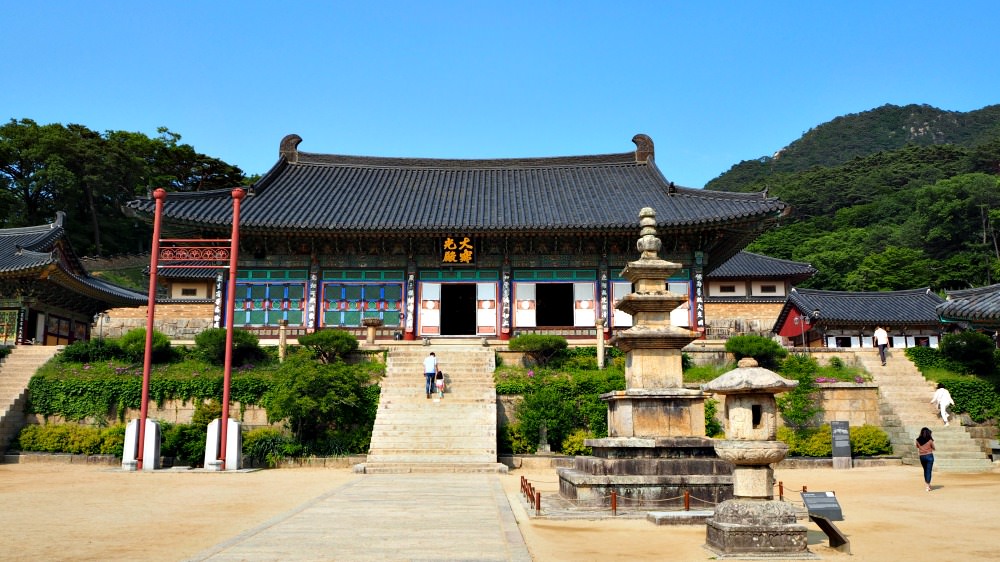
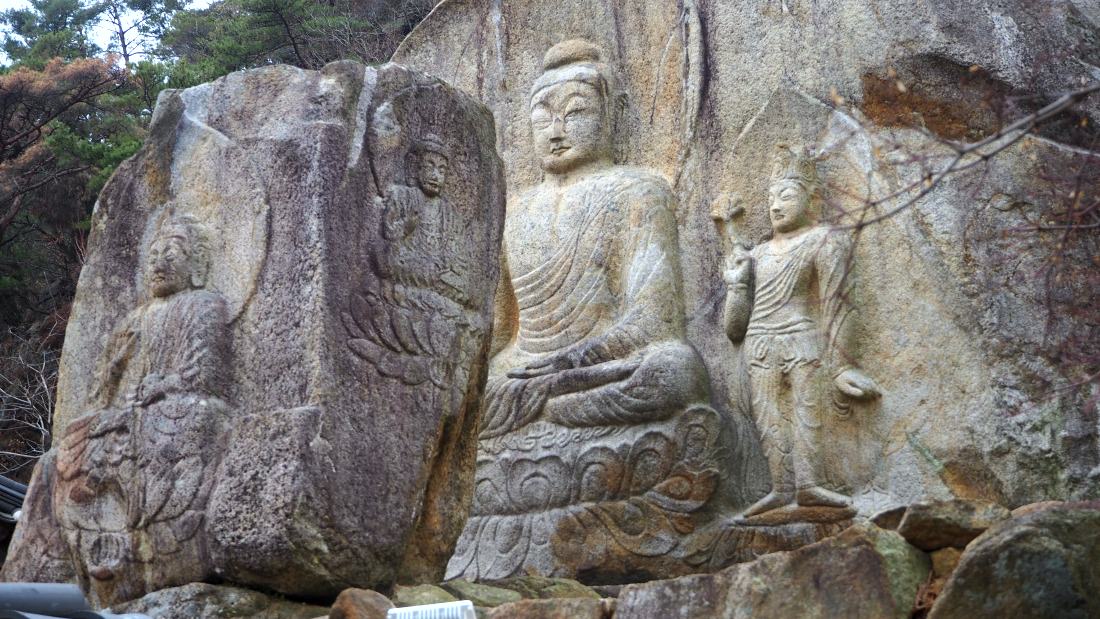
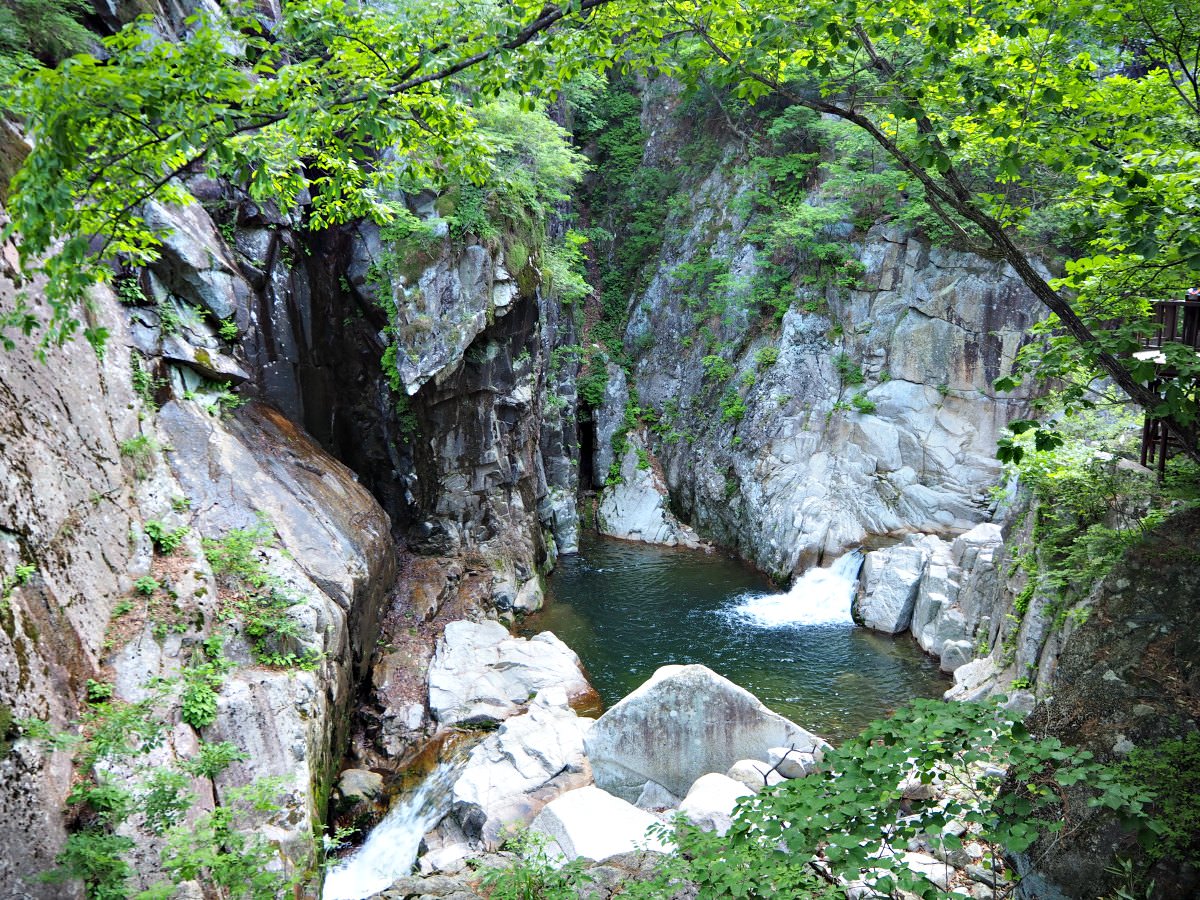
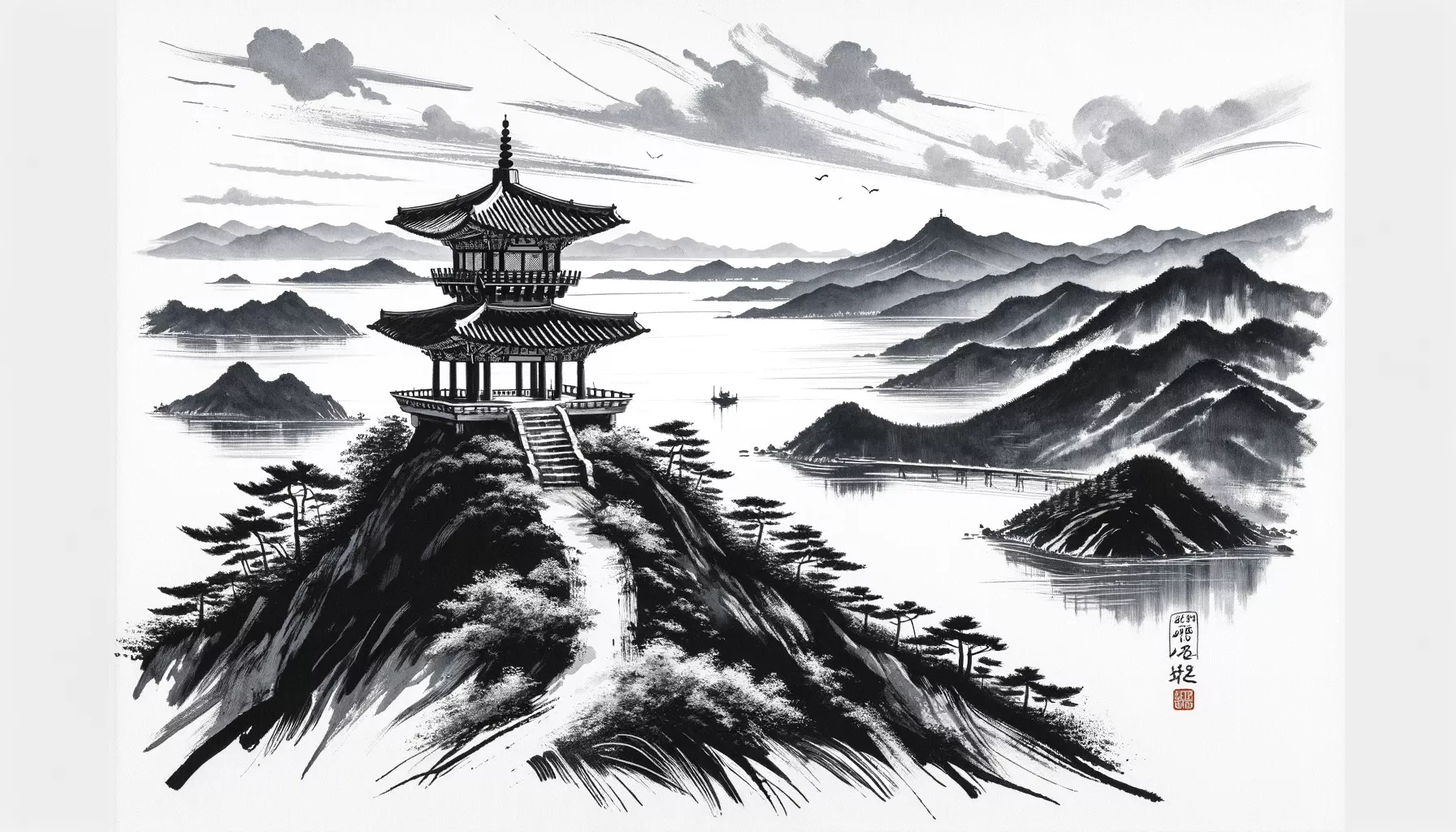
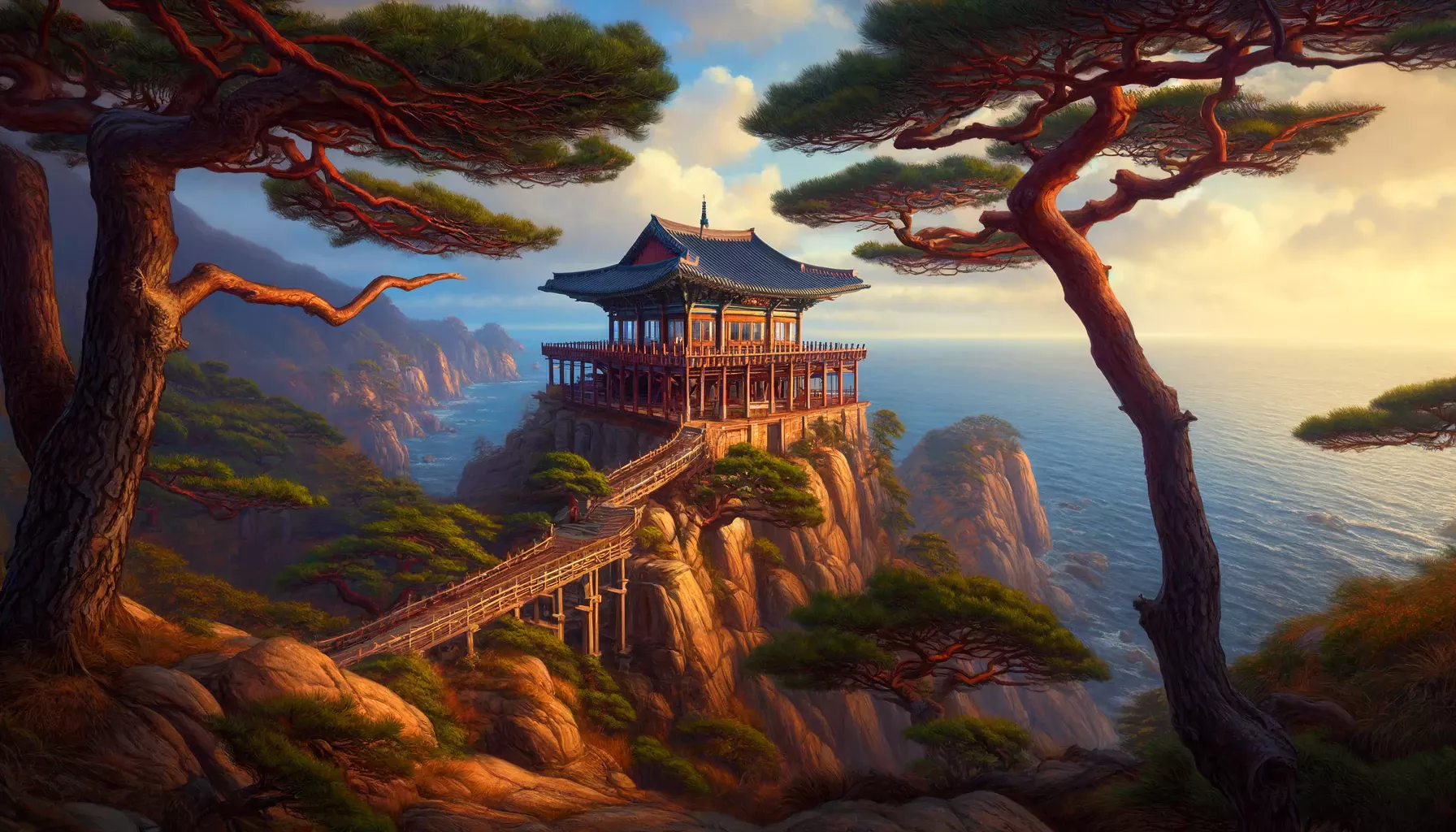




New! Comments
What do you think about this page? Leave me a comment in the box below.